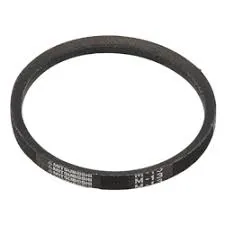- Arabic
- French
- Russian
- Spanish
- Portuguese
- Turkish
- Armenian
- English
- Albanian
- Amharic
- Azerbaijani
- Basque
- Belarusian
- Bengali
- Bosnian
- Bulgarian
- Catalan
- Cebuano
- Corsican
- Croatian
- Czech
- Danish
- Dutch
- Afrikaans
- Esperanto
- Estonian
- Finnish
- Frisian
- Galician
- Georgian
- German
- Greek
- Gujarati
- Haitian Creole
- hausa
- hawaiian
- Hebrew
- Hindi
- Miao
- Hungarian
- Icelandic
- igbo
- Indonesian
- irish
- Italian
- Japanese
- Javanese
- Kannada
- kazakh
- Khmer
- Rwandese
- Korean
- Kurdish
- Kyrgyz
- Lao
- Latin
- Latvian
- Lithuanian
- Luxembourgish
- Macedonian
- Malgashi
- Malay
- Malayalam
- Maltese
- Maori
- Marathi
- Mongolian
- Myanmar
- Nepali
- Norwegian
- Norwegian
- Occitan
- Pashto
- Persian
- Polish
- Punjabi
- Romanian
- Samoan
- Scottish Gaelic
- Serbian
- Sesotho
- Shona
- Sindhi
- Sinhala
- Slovak
- Slovenian
- Somali
- Sundanese
- Swahili
- Swedish
- Tagalog
- Tajik
- Tamil
- Tatar
- Telugu
- Thai
- Turkmen
- Ukrainian
- Urdu
- Uighur
- Uzbek
- Vietnamese
- Welsh
- Bantu
- Yiddish
- Yoruba
- Zulu
אוק . 12, 2024 09:05 Back to list
engine accessory drive belt
Understanding Engine Accessory Drive Belts Importance, Function, and Maintenance
Engine accessory drive belts, commonly referred to as serpentine belts or fan belts, play a crucial role in the overall functionality of a vehicle’s engine. These belts are responsible for powering various ancillary components such as the alternator, power steering pump, air conditioning compressor, and water pump. Understanding how these belts function, their significance, and how to maintain them can help ensure the longevity and efficiency of your vehicle.
The Function of Accessory Drive Belts
The primary function of engine accessory drive belts is to transfer rotational energy from the engine's crankshaft to the accessories attached to it. The design of modern vehicles typically employs a single serpentine belt that wraps around multiple pulleys, making it efficient and space-saving compared to older systems that used multiple belts for different components.
As the engine runs, the crankshaft rotates, and the serpentine belt spins around its pulleys. This action drives the attached accessories, allowing them to perform their functions. For instance, the alternator generates electricity to power the vehicle’s electrical system and recharge the battery, while the power steering pump helps with steering ease, and the air conditioning compressor regulates cabin temperature.
Importance of Accessory Drive Belts
The health of the accessory drive belt is essential for the smooth operation of these components. A worn or damaged belt can lead to a range of issues, including
1. Reduced Efficiency A slipping belt can cause accessories to work inefficiently, leading to poor performance. For example, a malfunctioning alternator might fail to charge the battery effectively, resulting in electrical issues.
3. Power Steering Failure A failing belt can mean a loss of power steering assistance, making the vehicle hard to steer, especially at low speeds.
engine accessory drive belt

4. Increased Repair Costs Ignoring belt maintenance might lead to a cascading series of failures as other engine components are affected, resulting in more expensive repairs.
Maintenance of Accessory Drive Belts
To maintain the efficiency and longevity of accessory drive belts, regular inspection and timely replacement are vital. Here are some maintenance tips
- Visual Inspection Regularly check the belt for cracks, fraying, or signs of wear. Look for any glazing (a shiny surface) that may indicate slippage.
- Listen for Noises Unusual squeaking or squealing sounds when starting the engine or while driving can signal a problem with the belt.
- Check Tension Ensure the belt is properly tensioned. A belt that is too loose can slip, while one that is too tight can put excessive strain on the accessories.
- Replacement Schedule Consult your vehicle owner’s manual for specific recommendations regarding belt replacement intervals. Typically, serpentine belts should be replaced every 60,000 to 100,000 miles, but this can vary based on the vehicle model and driving conditions.
Conclusion
Engine accessory drive belts are vital for the efficient functioning of various critical components in a vehicle. Understanding their role and maintaining them through regular inspections and timely replacements can prevent a host of problems, ensuring your vehicle remains reliable and efficient. By staying proactive about belt maintenance, you can safeguard against future breakdowns and keep your vehicle running smoothly.
-
Korean Auto Parts Timing Belt 24312-37500 For Hyundai/Kia
NewsMar.07,2025
-
7PK2300 90916-T2024 RIBBED BELT POLY V BELT PK BELT
NewsMar.07,2025
-
Chinese Auto Belt Factory 310-2M-22 For BMW/Mercedes-Benz
NewsMar.07,2025
-
Chinese Auto Belt Factory 310-2M-22 For BMW/Mercedes-Benz
NewsMar.07,2025
-
90916-02660 PK Belt 6PK1680 For Toyota
NewsMar.07,2025
-
drive belt serpentine belt
NewsMar.07,2025

